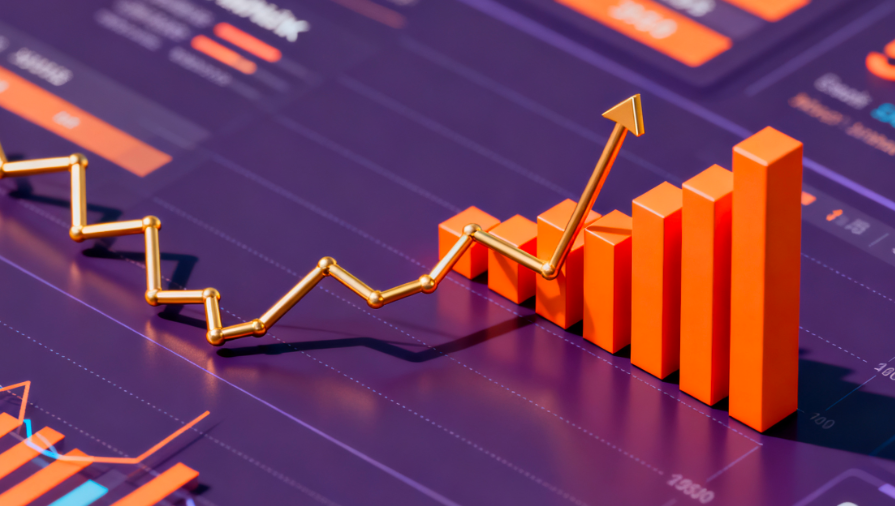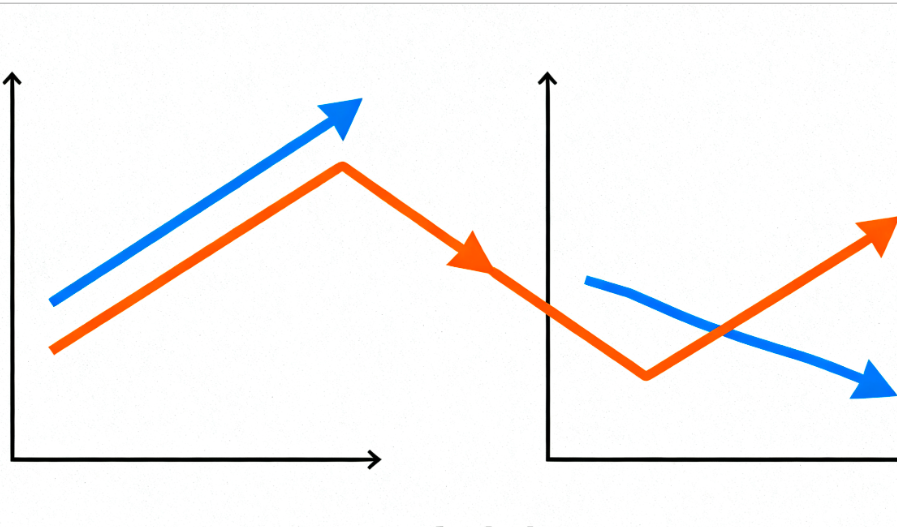
Gold is becoming one of the most eye-catching major assets globally. During the National Day holiday, London gold surged, breaking through $4000/oz, with a gain of over 4.6%, and a year-to-date increase exceeding 50%. During the same period, COMEX gold also refreshed its historical high to $4071.5/oz.
Following the repeated new highs of international gold prices during the National Day holiday, domestic gold ETFs and gold equity ETFs immediately saw strong catch-up gains when the market opened on October 9. By the close on October 9, the 14 gold ETFs across the market averaged a single-day gain of 4.48%, while gold equity ETFs averaged gains over 9%. Notably, 5 gold equity ETFs newly became "double-return funds" (funds that have doubled in value), with year-to-date gains rivaling those of Hong Kong-listed innovative pharmaceutical stocks.
Behind the continuously record-breaking gold prices lie dual signals of rising global safe-haven demand and declining confidence in the US dollar. After surpassing $4000, is gold still suitable for investment?
Gold ETF Assets Surge by Over 20.9 Billion Yuan Since September
Data shows that on October 9, all 14 gold ETFs in the market jumped at the open, averaging a single-day gain of 4.48% by the close, with a total daily turnover nearing 12.9 billion yuan. Among them, the largest by size, Hua An Gold ETF, saw a daily turnover of nearly 7 billion yuan.
Accompanying the rise in gold prices, the strengthening of related stocks in the gold industry chain has also propelled the returns of gold equity ETFs, often referred to as "gold price amplifiers," to surge forward.
By the close, the SSH Gold Stock Index rose 6.41% for the day, and the 6 gold equity ETFs linked to this index in the market further delivered excess returns. Among them, gold equity ETFs under Hua An Fund and ICBC Credit Suisse Fund led the ETF market with single-day gains exceeding 10%, while the other 4 gold equity ETFs rose between 8.95% and 9.47% during the day.
Compared to gold ETFs, trading in gold equity ETFs was significantly more active. Data shows that the average daily turnover rate for these 6 products reached 24%, with a total combined turnover exceeding 1.2 billion yuan.
It is worth mentioning that, calculating from the start of the year, 5 gold equity ETFs newly became "double-return funds" on October 9, meaning their year-to-date gains exceeded 100%. Currently, there are only 10 ETFs in the entire market with year-to-date returns that have "doubled," the rest being products linked to the Hong Kong-listed innovative pharmaceutical index.
As domestic gold prices broke through previous highs, related products continued to attract capital allocations, and the overall market product scale expanded significantly.
During September, the aforementioned 14 gold ETFs received a total net inflow of 5.6 billion yuan. However, the flow of funds diverged among different products, showing a trend where half the funds experienced net outflows and half received net inflows.
Specifically, gold ETFs under Hua An, Guotai, and ChinaAMC ranked top three with net inflows of 5.3 billion, 1.241 billion, and 780 million yuan, respectively. In contrast, gold ETFs under Bosera and E Fund saw net outflows of 860 million and 790 million yuan during the same period, making them the two products with the largest net outflows among similar ETFs.
Regarding overall scale, as of October 9, the total scale of gold ETFs across the market was 169.485 billion yuan, an increase of 20.9 billion yuan compared to early September. Among them, 5 gold ETFs surpassed the 100 billion yuan scale mark. The largest, Hua An Gold ETF, reached a latest scale of 68.263 billion yuan, officially breaking the 60 billion yuan mark in October, an increase of 10.862 billion yuan compared to September 1.
Guotai Gold ETF and Bosera Gold ETF, as funds with scales around the 20 billion yuan level, followed closely, achieving scale increases of 2.954 billion and 2.362 billion yuan respectively during the same period.
This round of catch-up gains in gold ETFs is still a continuation of gold's September performance. From the perspective of multiple institutions, the ongoing US federal government "shutdown" crisis is one direct factor behind the gold price surge. Simultaneously, the Fed's interest rate cut decision in September also triggered a short-term pullback in gold prices, but market expectations for policy easing remain strong and bullish for gold prices.
The enthusiasm of global central banks for increasing gold holdings has not waned. According to IMF and PBOC data, global monetary gold holdings now exceed one-fifth of global official reserves. On October 7, statistics from the State Administration of Foreign Exchange also showed that China's gold reserves at the end of September were 74.06 million ounces, an increase of 40,000 ounces month-on-month, marking the 11th consecutive month of gold accumulation.
Still Possesses Upside Logic After the "Three Waves" of Gains Within the Year
Since the beginning of 2025, gold prices have successively broken through multiple integer thresholds. In early January and early April this year, international gold prices experienced two rounds of rapid upward trends, quickly climbing from $2600/oz to $3400/oz.
Since September, spot gold prices have ushered in a third wave, continuously breaking through hundred-dollar marks upward from $3500, finally reaching the historical high of $4000 in October.
The flow of funds into gold ETFs throughout the year is also highly correlated with gold market performance. Huatai Securities Research Institute recalled that from January to April, domestic gold ETFs were mainly characterized by net inflows, with the highest single-week net inflow reaching 18 billion yuan during the阶段性高点 in April.
From May to August, gold ETF fund flows were dominated by narrow fluctuations. Since August, as gold prices resumed their upward trend, some funds took profits, reduced positions, and exited, leading to relatively obvious outflows from gold ETFs. Currently, as domestic gold prices break previous highs, gold ETFs have seen a return to weekly net inflows, with some investors beginning to chase the rally.
Standing at the beginning of the fourth quarter of 2025, international and domestic institutions remain optimistic about the future performance of gold prices.
Reporters noted that for the year-end gold price, UBS recently forecasted $4200/oz in a report, based on dual support from fundamentals and momentum.
"The path of Fed rate cuts, the evolution of geopolitical risks, and global economic stability will be key variables. If the US government shutdown persists, the French crisis deepens, or trade frictions escalate, gold's safe-haven demand will further explode. However, potential risks need vigilance, such as if the Fed pauses rate cuts due to rebounding inflation, gold might face short-term pullbacks," UBS stated.
Coincidentally, Goldman Sachs Group on October 6 raised its gold price forecast for December 2026 from the previous $4300/oz to $4900/oz. In Goldman's view, rapidly growing Western ETF positions, central banks re-accelerating gold purchases, and increased speculative positioning are the three "steadfast buyers" of gold.
Hua An Fund manager Xu Zhiyan similarly believes that looking ahead, the logic for gold's rise remains unchanged. "Overall, although the current increase is already significant, factors such as the continuation of the Fed's easing cycle, geopolitical risks, and inflows of investment demand will keep gold prices in a high, volatile, and strong pattern," he pointed out. "However, in the short term, we still need to pay attention to changes in the US government shutdown. If order is restored, short-term safe-haven sentiment might subside."
Regarding gold stocks, the current high levels of domestic gold mining stocks have also raised market doubts about valuation methods and potential. However, CITIC Securities recently expressed, from both qualitative and quantitative perspectives, that it remains optimistic about the allocation value of domestic gold stocks.
"We believe that, firstly, in terms of direction, sufficient upward momentum in gold prices coupled with accelerated production release from gold mining companies, with both volume and price rising, is expected to drive further upward repair of the sector's PE ratio; secondly, in terms of potential, domestic gold stocks are significantly undervalued in terms of cash flow and resources. The future domestic adoption of these two valuation methods is expected to promote revaluation," CITIC Securities stated.
















